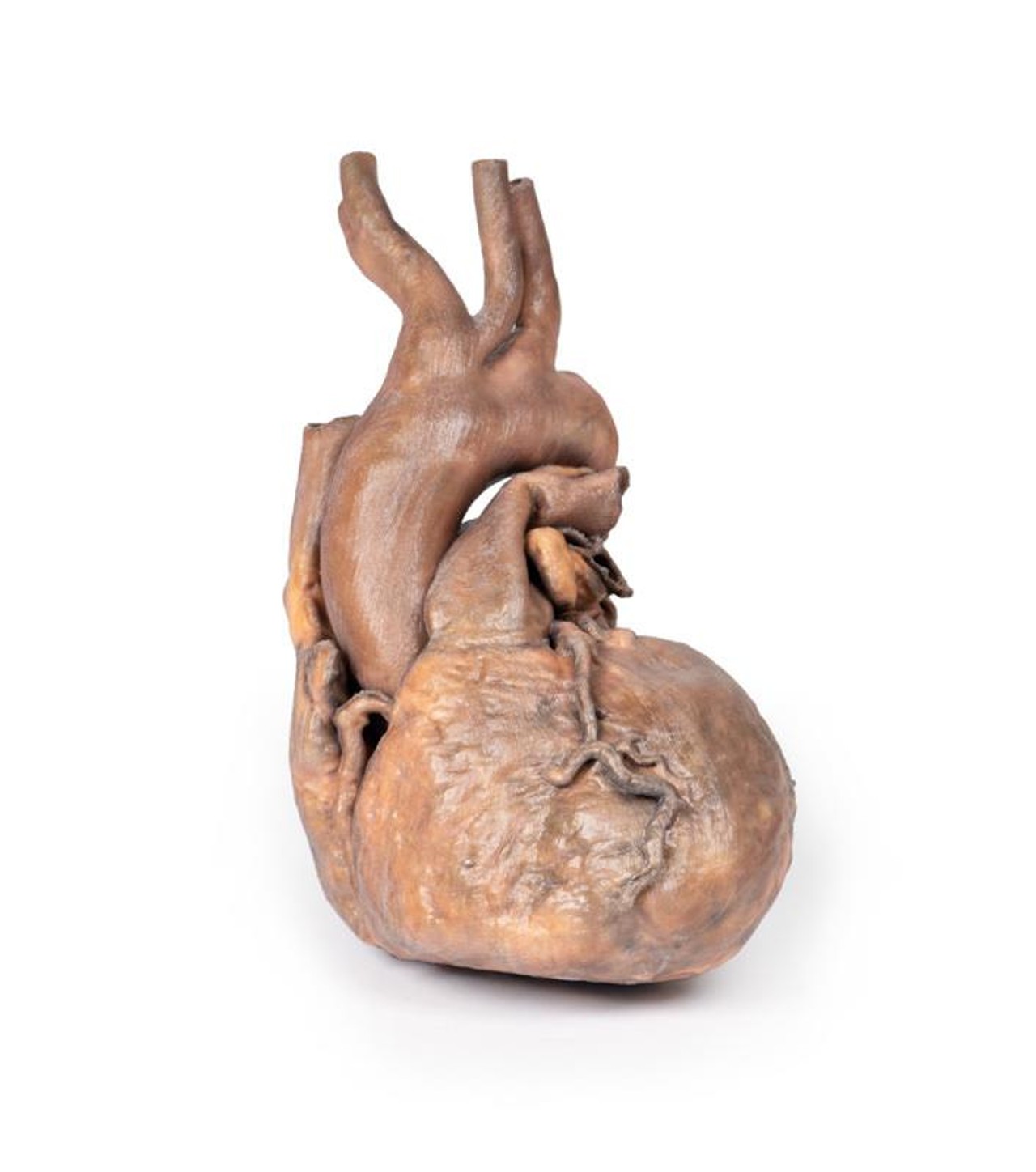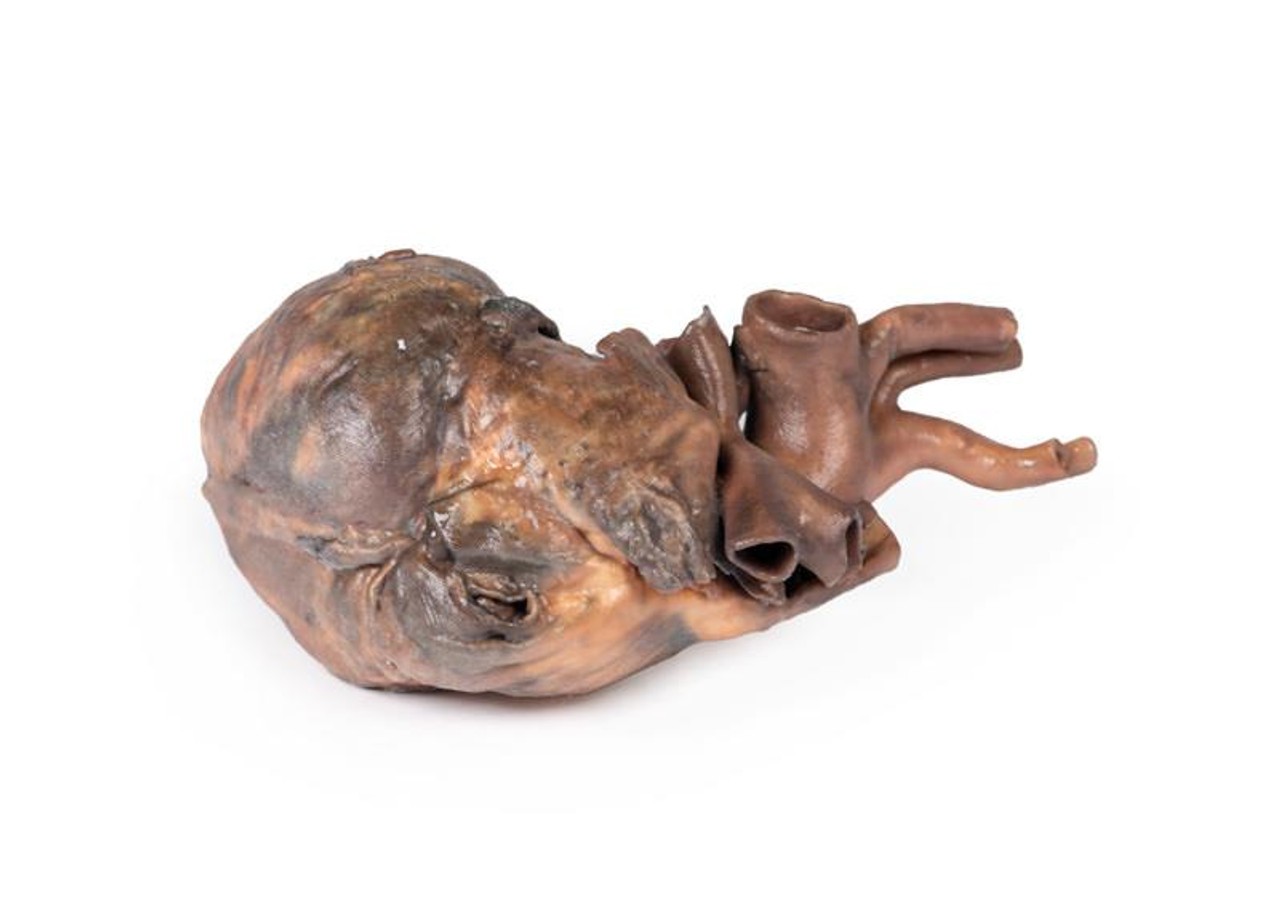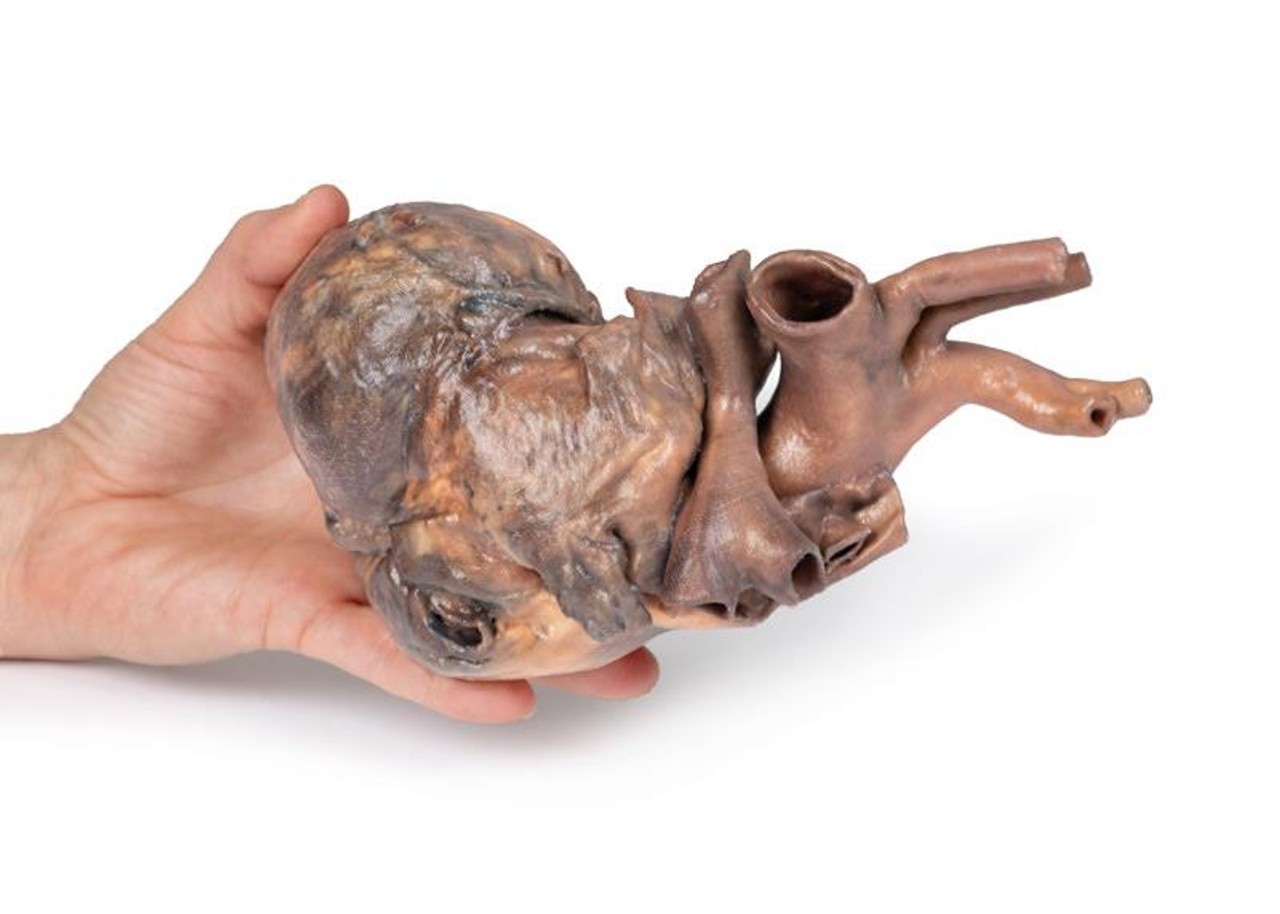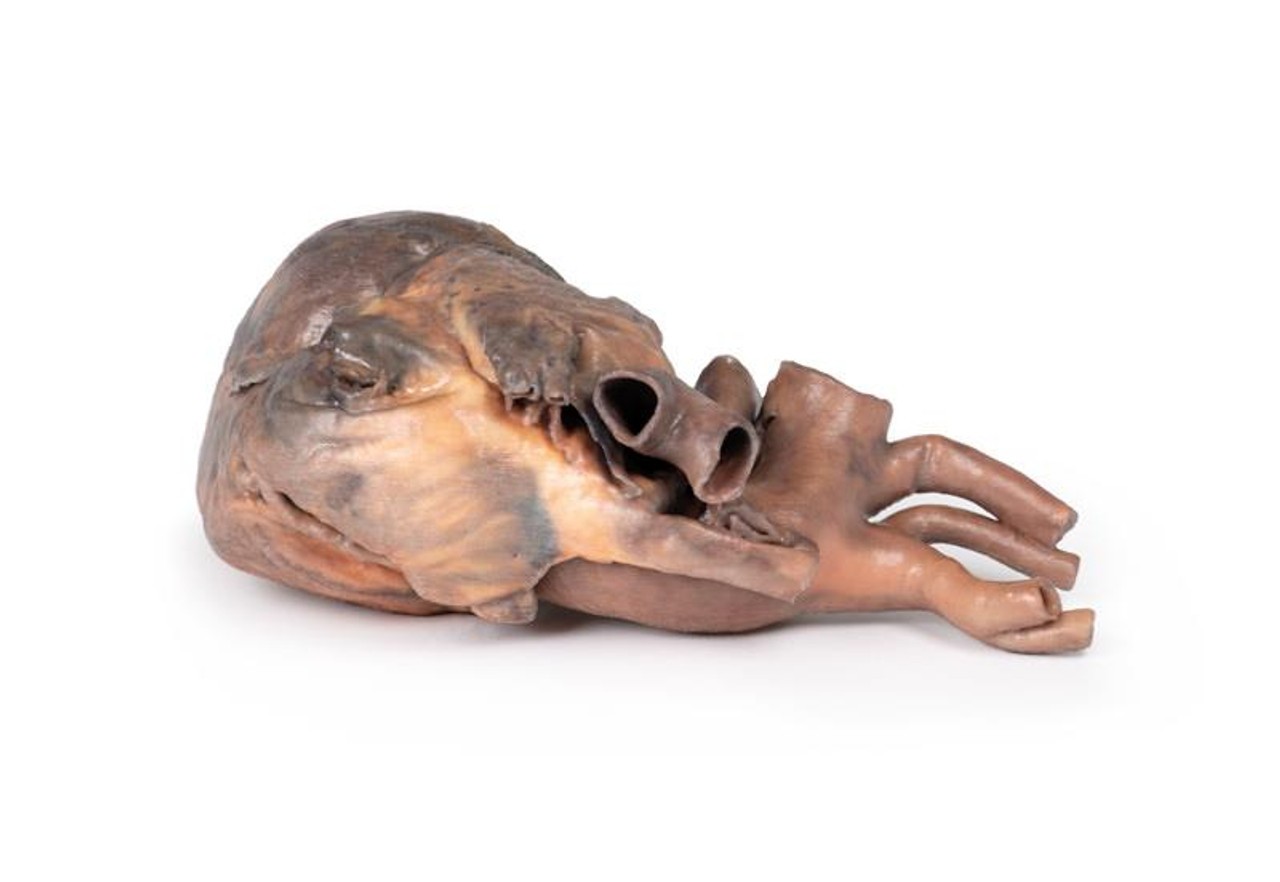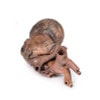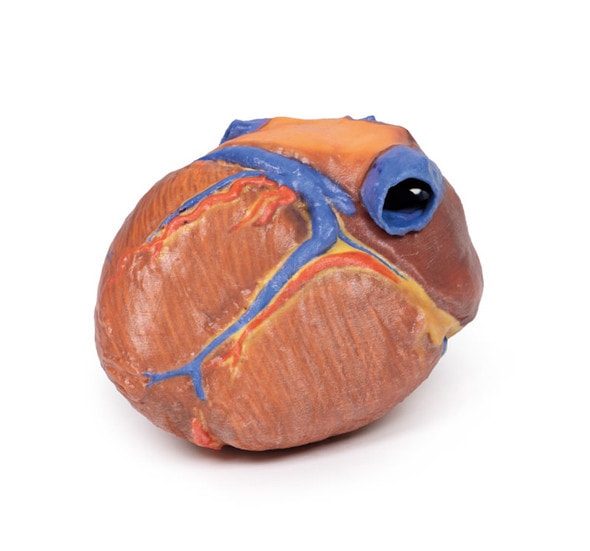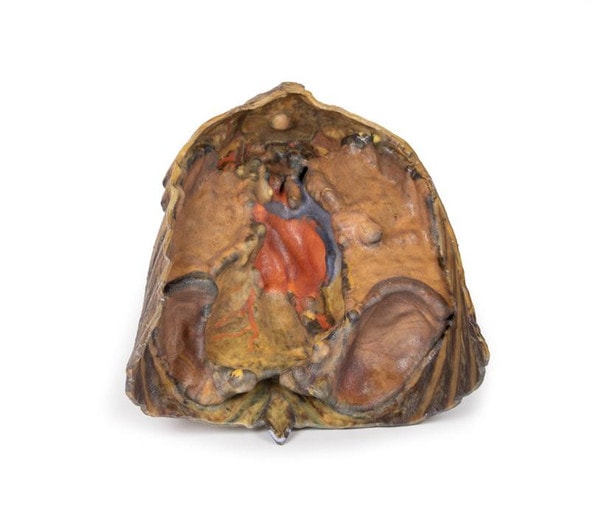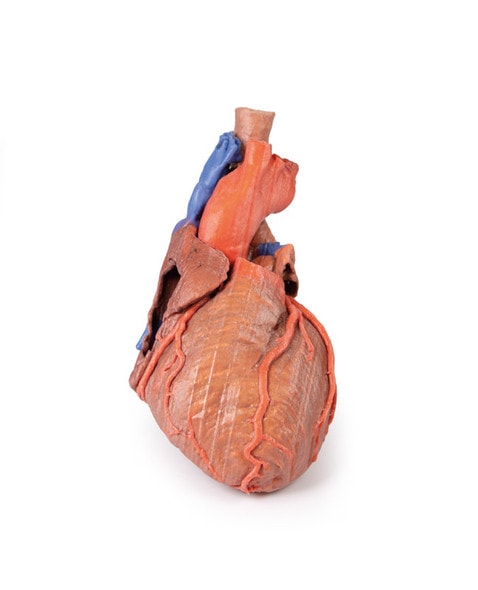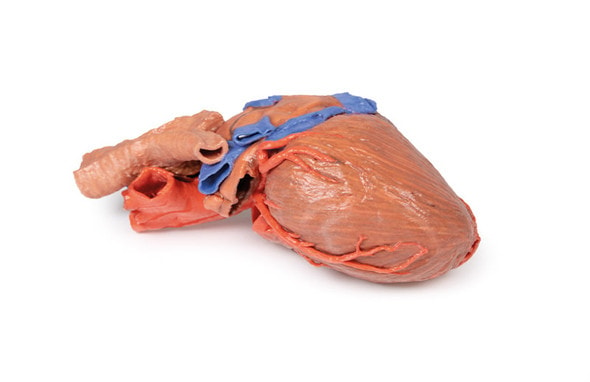Description
This 3D model represents a normal sized adult heart with light dissection to the epicardium to expose the coronary arteries and cardiac veins.
At the base of the heart, the terminal part of the superior vena cava and azygous vein can be observed just prior to draining into the right atrium. Immediately adjacent to the superior vena cava, the arch of the aorta has been preserved with the origins of the aortic arch derivative arteries. In slight contrast to the typical branching pattern, the brachiocephalic trunk includes both the right subclavian and right common carotids as well as the left common carotid. As a result, only two direct arterial branches can be observed with the unusually joined brachiocephalic trunk and left subclavian arising before the descent of the thoracic aorta posterior to the pulmonary trunk. The pulmonary trunk and pulmonary arteries are preserved, including a robust ligamentum arteriosum connecting the left pulmonary artery to the aortic arch.
The removal of the epicardium has exposed the coronary arteries and branches across both the anterior and posterior aspects of the heart chambers. The right coronary artery can be seen descending from its origin at the ascending aorta, and wrapping posteriorly to approach the posterior interventricular sulcus. The origin of the left coronary artery is obscured by the auricle of the left atrium, but the branches from this artery the anterior interventricular (left anterior descending), diagonal (passing deep into the myocardium) and the circumflex artery can be observed at the superior margin of the left ventricle. The anterior interventricular descends towards the apex with several branches passing deep into the myocardium, while the circumflex passes posteriorly and lies just superficial to a preserved portion of the great cardiac vein. On the posterior aspect, a well-defined coronary sinus is preserved to its termination at the right atrium near the inferior vena cava.
Advantages of 3D Printed Anatomical Models
- 3D printed anatomical models are the most anatomically accurate examples of human anatomy because they are based on real human specimens.
- Avoid the ethical complications and complex handling, storage, and documentation requirements with 3D printed models when compared to human cadaveric specimens.
- 3D printed anatomy models are far less expensive than real human cadaveric specimens.
- Reproducibility and consistency allow for standardization of education and faster availability of models when you need them.
- Customization options are available for specific applications or educational needs. Enlargement, highlighting of specific anatomical structures, cutaway views, and more are just some of the customizations available.
Disadvantages of Human Cadavers
- Access to cadavers can be problematic and ethical complications are hard to avoid. Many countries cannot access cadavers for cultural and religious reasons.
- Human cadavers are costly to procure and require expensive storage facilities and dedicated staff to maintain them. Maintenance of the facility alone is costly.
- The cost to develop a cadaver lab or plastination technique is extremely high. Those funds could purchase hundreds of easy to handle, realistic 3D printed anatomical replicas.
- Wet specimens cannot be used in uncertified labs. Certification is expensive and time-consuming.
- Exposure to preservation fluids and chemicals is known to cause long-term health problems for lab workers and students. 3D printed anatomical replicas are safe to handle without any special equipment.
- Lack of reuse and reproducibility. If a dissection mistake is made, a new specimen has to be used and students have to start all over again.
Disadvantages of Plastinated Specimens
- Like real human cadaveric specimens, plastinated models are extremely expensive.
- Plastinated specimens still require real human samples and pose the same ethical issues as real human cadavers.
- The plastination process is extensive and takes months or longer to complete. 3D printed human anatomical models are available in a fraction of the time.
- Plastinated models, like human cadavers, are one of a kind and can only showcase one presentation of human anatomy.
Advanced 3D Printing Techniques for Superior Results
- Vibrant color offering with 10 million colors
- UV-curable inkjet printing
- High quality 3D printing that can create products that are delicate, extremely precise, and incredibly realistic
- To improve durability of fragile, thin, and delicate arteries, veins or vessels, a clear support material is printed in key areas. This makes the models robust so they can be handled by students easily.

